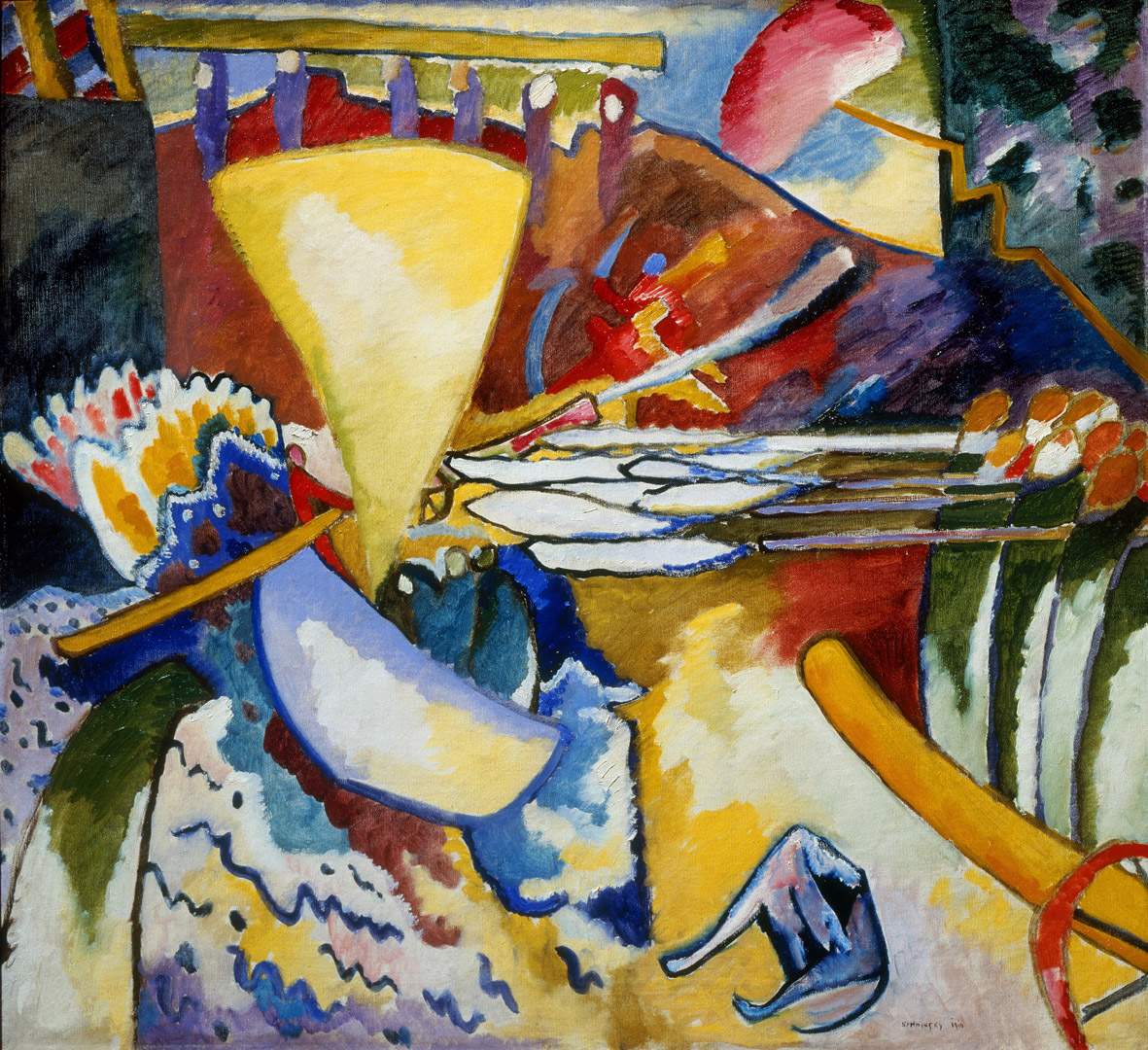Vasily Kandinsky: a major exhibition in Rovigo traces his art
An itinerary that gets to the heart of all the creative moments in the story of Vasily Kandinsky ( Moscow, 1866 - Neuilly-sur-Seine, 1944), documenting it through a sequence of works of great quality: this is Vasily Kandinsky, the exhibition on the great Russian artist scheduled from Feb. 26 to June 26, 2022, at Palazzo Roverella in Rovigo. Curated by Paolo Bolpagni and Evgenia Petrova, it aims to delve into the Kandinsky enigma, to date not yet fully unraveled. Thanks to the presence of works granted in particular by Russian museums, but also by numerous European institutions, the exhibition makes clear the curators’ desire to analyze the Kandinsky story with an original slant. The exhibition starts from the artist’s beginnings, in Munich, and then delves into his landing in Murnau and the discovery of the spiritual in art, leading then to the magical moment of the Blue Rider and the conquest of abstractionism (1911-1914). Then the return to Russia (1914-1921) and the experience at the Bauhaus (1922-1933), until the Master’s last years on French soil.
“After a number of exhibitions aimed at highlighting individual aspects of Kandinsky, the goal of this project is to help grasp the unified arc of the artist’s path,” anticipate Paolo Bolpagni and Evgenia Petrova. This will be done “by identifying the constants that, from the early twentieth century until the end, innervate his highly personal way of painting: the search for an inner authenticity, the desire to create a new and free visual world, the reference to music, spiritualistic irrationalism, and the link with Russian folk art and especially with the creative expressions of the peoples of Siberia, whose traces act as a common thread. The musical and ethnographic components reveal a common spiritualistic root.”
All this while gradually witnessing the coming to life of the gradual shift from figuration to abstraction, which emerges as the keystone of one of the most radical revolutions in painting of the first half of the 20th century. Kandinsky’s contribution to the creation of an expressive form of painting based on new assumptions is enormous. But, the curators point out, “despite the great historical-critical work that, even in recent decades, has been done by many scholars, there remains something enigmatic in the analysis of his path. Numerous were the matrices from which sprang, with slow gradualness, that artistic language that shocked the twentieth century: from the very strong power of suggestion exerted on Kandinsky by music, to the knowledge of the peasant folk culture of deep Russia; of the houses, furniture and colorful costumes with which he came into contact during an expedition to the Vologda territory in Siberia.”
As this exhibition points out, Kandinsky’s fascination also lies in his impregnability, in eluding entirely rational explanations. And the aim of the exhibition designed for the Roverella is to analyze the constant change and evolution of his evocative and visionary art, first and foremost in the fundamental shift from figuration to abstractionism, in the dialectic between expressive freedom and ordering principles.
The exhibition is sponsored by the Fondazione Cassa di Risparmio di Padova e Rovigo in collaboration with the Municipality of Rovigo.
 |
| Vasily Kandinsky: a major exhibition in Rovigo traces his art |
Warning: the translation into English of the original Italian article was created using automatic tools. We undertake to review all articles, but we do not guarantee the total absence of inaccuracies in the translation due to the program. You can find the original by clicking on the ITA button. If you find any mistake,please contact us.





























